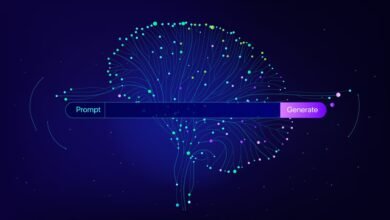AI Security Map: How Vulnerabilities Cause Real-World Harm

▼ Summary
– A single prompt injection in an AI chatbot can quickly lead to data leaks, trust damage, and regulatory issues, with impacts extending beyond technical breaches.
– The AI Security Map connects technical weaknesses like confidentiality or integrity failures to real-world societal, legal, and business harms.
– AI security risks include both direct impacts, such as privacy breaches from confidentiality failures, and indirect chains like disinformation spreading from controllability issues.
– CISOs should prioritize protecting integrity and confidentiality in AI systems and use the map for risk planning, vendor assessments, and executive communication.
– Experts recommend using commercially built AI models to offload responsibility for fairness and explainability and emphasize mapping users, data domains, and data flows for comprehensive risk assessment.
A single prompt injection vulnerability within a customer-facing chatbot can expose sensitive information, erode user trust, and attract regulatory attention within hours. While the technical breach itself is concerning, the greater danger lies in how rapidly a single flaw in an artificial intelligence system can set off a cascade of operational, legal, and societal consequences. Researchers at KDDI Research have introduced the AI Security Map to illustrate these connections, demonstrating how technical failures can lead to repercussions that extend well beyond the immediate system.
Current approaches to AI security frequently address only isolated aspects of the challenge. Some experts concentrate on specific attack methods like data poisoning, backdoors, or prompt injections, while others examine individual system attributes such as fairness, privacy, or transparency. This fragmented perspective creates a significant gap in grasping how technical weaknesses translate into tangible real-world harm.
For instance, a poisoning attack that reduces model accuracy might generate misleading user recommendations, potentially causing financial damage or physical safety hazards. The pathway from the initial attack to the final outcome is rarely explored in purely technical analyses.
The AI Security Map organizes AI security into two interconnected dimensions.
The first is the Information System Aspect (ISA), which outlines the fundamental requirements for AI to operate securely within a technical environment. It encompasses the classic security principles of confidentiality, integrity, and availability, while also integrating AI-specific qualities like explainability, fairness, safety, accuracy, controllability, and trustworthiness.
The second dimension is the External Influence Aspect (EIA), which captures the effects on individuals, organizations, and society when AI systems are compromised or misused. These consequences may involve privacy violations, the spread of misinformation, economic losses, threats to critical infrastructure, and legal non-compliance.
This model establishes clear links between ISA elements and potential EIA outcomes. A breach in integrity, for example, could result in biased decisions, safety failures, or loss of confidence. Similarly, a confidentiality failure might lead to privacy infringements, reputational damage, or regulatory penalties.
Harm can propagate through both direct and indirect pathways. Some effects are immediate, a confidentiality breach directly causes a privacy violation. Others unfold through a sequence of events. A prompt injection attack might first disrupt system controllability, enabling an attacker to produce disinformation. If that false content circulates widely, it could mislead people who never interacted with the original AI system.
This is significant because AI misuse can inflict damage even when the underlying system performs as designed. Attackers may leverage high accuracy or broad availability to automate malicious campaigns or generate highly convincing fraudulent material.
Kat Traxler, Principal Security Researcher at Vectra AI, emphasized that this challenge transcends individual enterprises. She noted that the AI Security Map rightly underscores how misuse can cause harm even in properly functioning systems. Organizations must acknowledge that biases and vulnerabilities can be exploited under normal operating conditions. The entire industry struggles with deeply complex issues around explainability and fairness, problems too intricate for most large corporations to solve alone. Her recommendation is to avoid developing custom large-scale models.
Instead, she advises leveraging established commercial platforms such as Gemini, ChatGPT, or Claude. This approach transfers much of the burden for ensuring explainability and fairness to major providers who are better equipped to drive industry-wide progress.
For security leaders, the AI Security Map offers several critical insights.
Integrity emerges as the most pivotal element within the ISA. Once compromised, it jeopardizes numerous other attributes. Safeguarding integrity is challenging but essential for preventing widespread damage.
Confidentiality is frequently the initial objective in attacks, underscoring the continued importance of privacy-focused measures like access controls, encryption, and differential privacy within AI deployments.
Beyond technical protections, the model supports broader security strategies such as risk mapping, tabletop exercises, and incident response planning. Illustrating how a technical failure might lead to operational disruption or legal liability can help justify defensive investments.
Security executives can utilize the AI Security Map in various practical applications, such as linking identified vulnerabilities in AI systems to potential effects on stakeholders.
Melissa Ruzzi, who leads AI initiatives at AppOmni, believes the framework can be improved by thoroughly mapping both users and data. She notes that the initial step in integrating the technical and societal effects into risk evaluations involves defining the AI’s functions. This includes identifying the user groups, such as employees, business clients, or the public, and specifying the domains where the AI is applied, like healthcare, forecasting, or security analysis. By merging these elements, one can better understand the social implications involved.
She also highlights the need to grasp the flow of data, from its origin through processing and aggregation, encompassing ETL pipelines, data movement, and MLOps procedures. Additionally, the role of monitoring and observability in influencing system behavior is crucial. For CISOs, this broadened perspective allows for risk assessments that address AI-specific risks extending well beyond mere technical concerns.
(Source: HelpNet Security)





